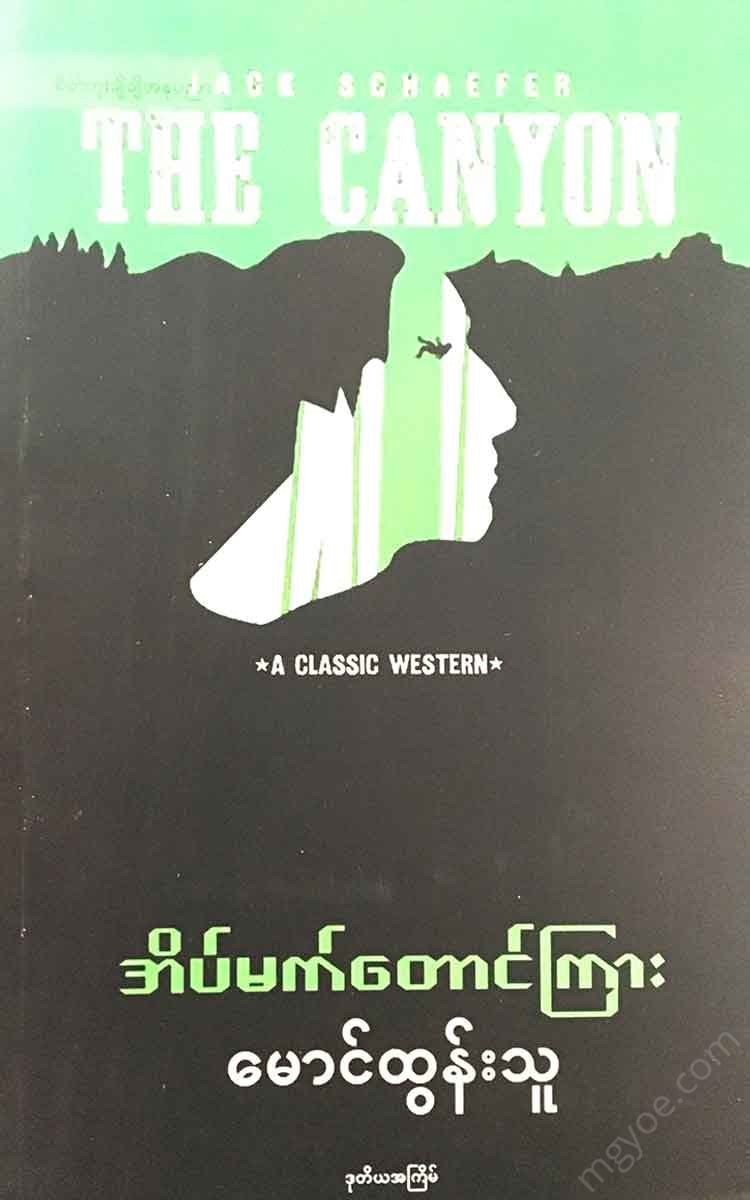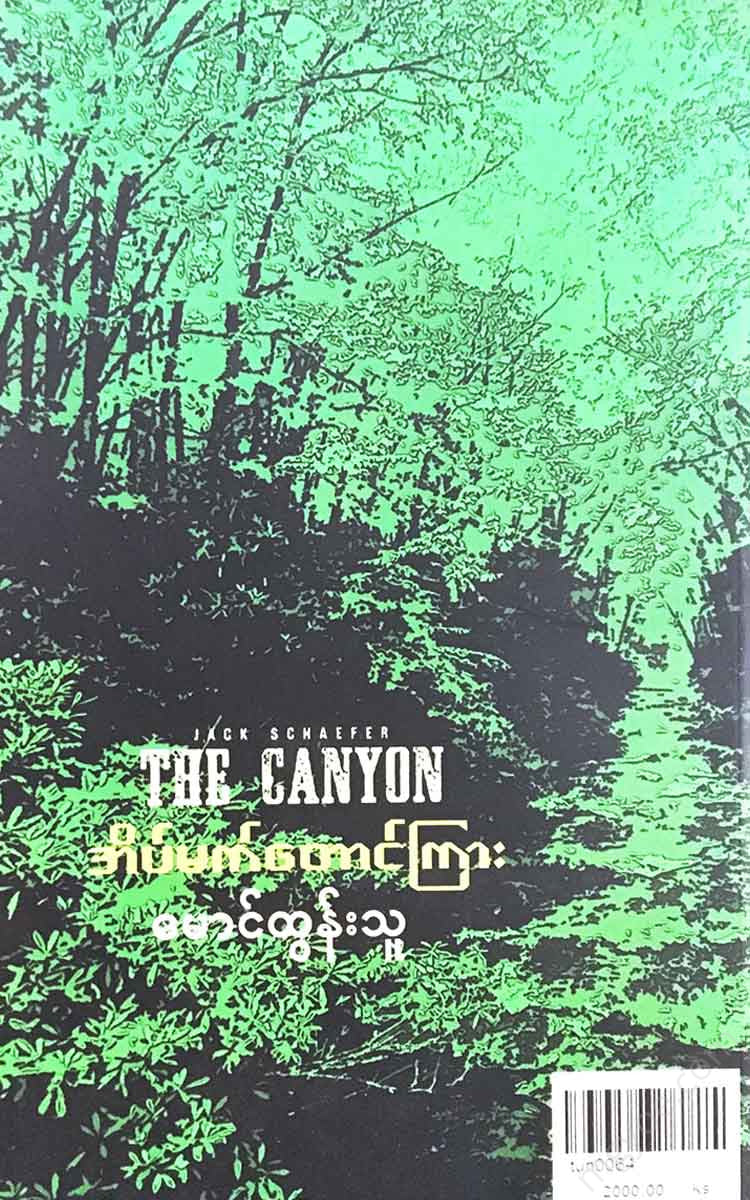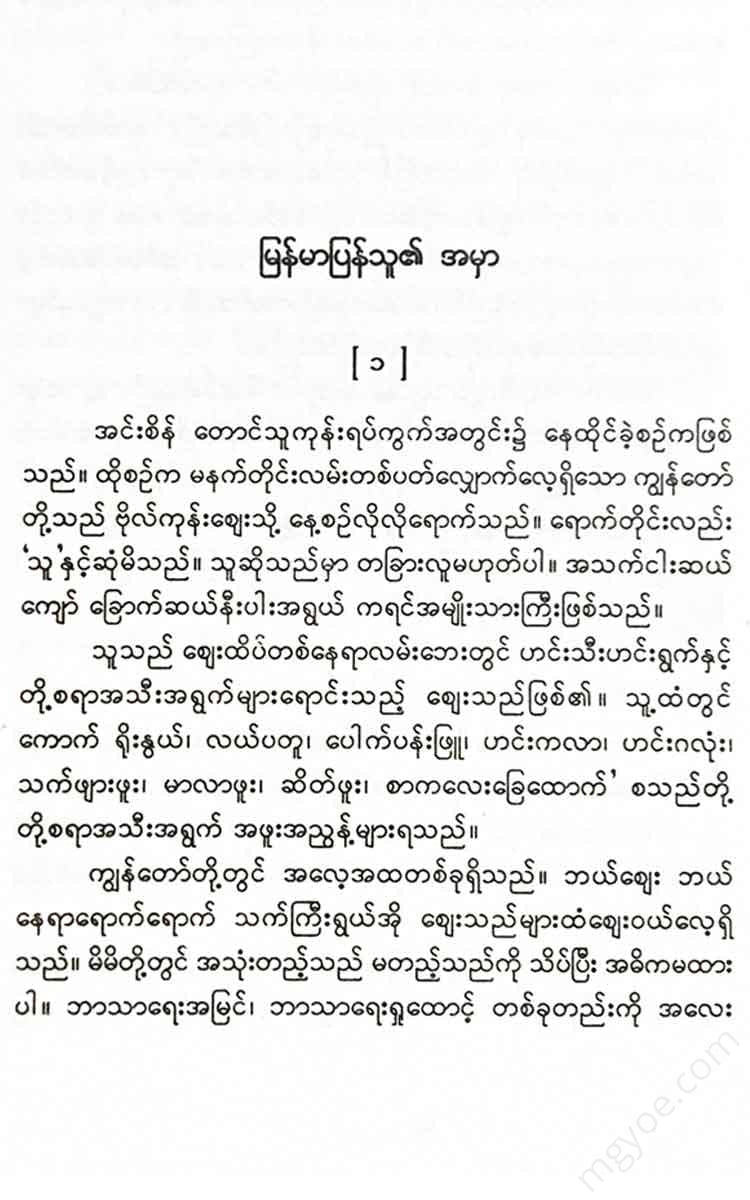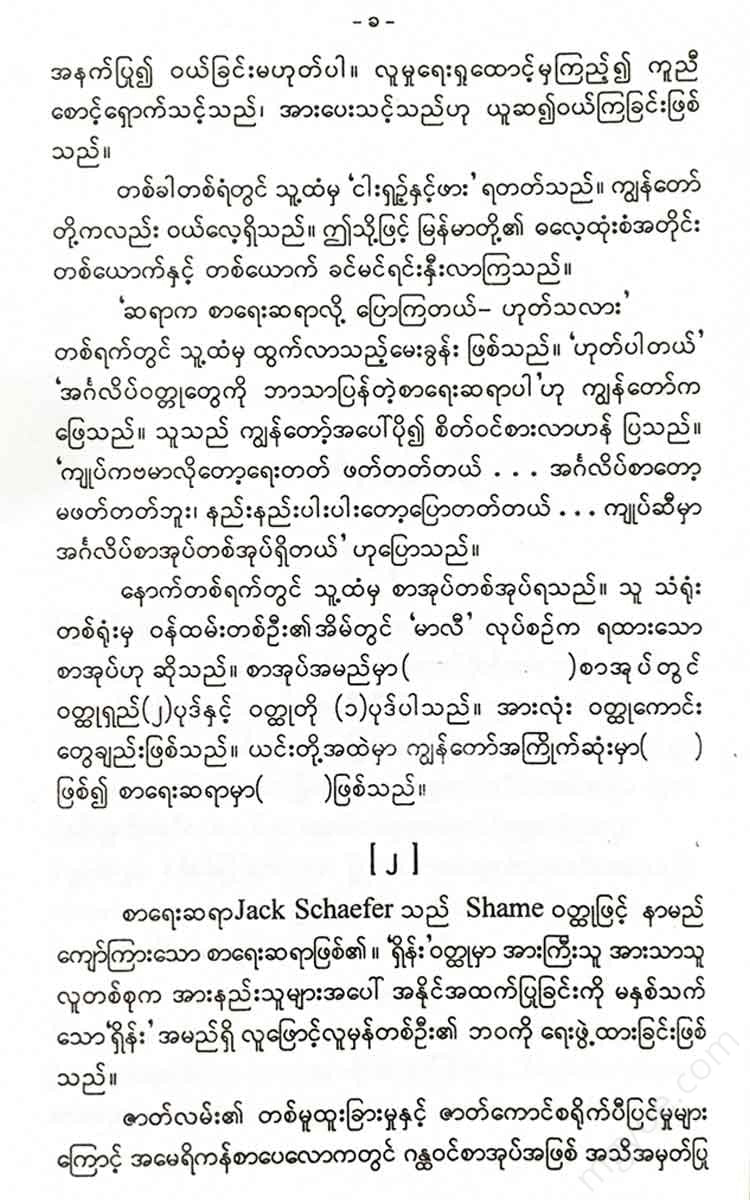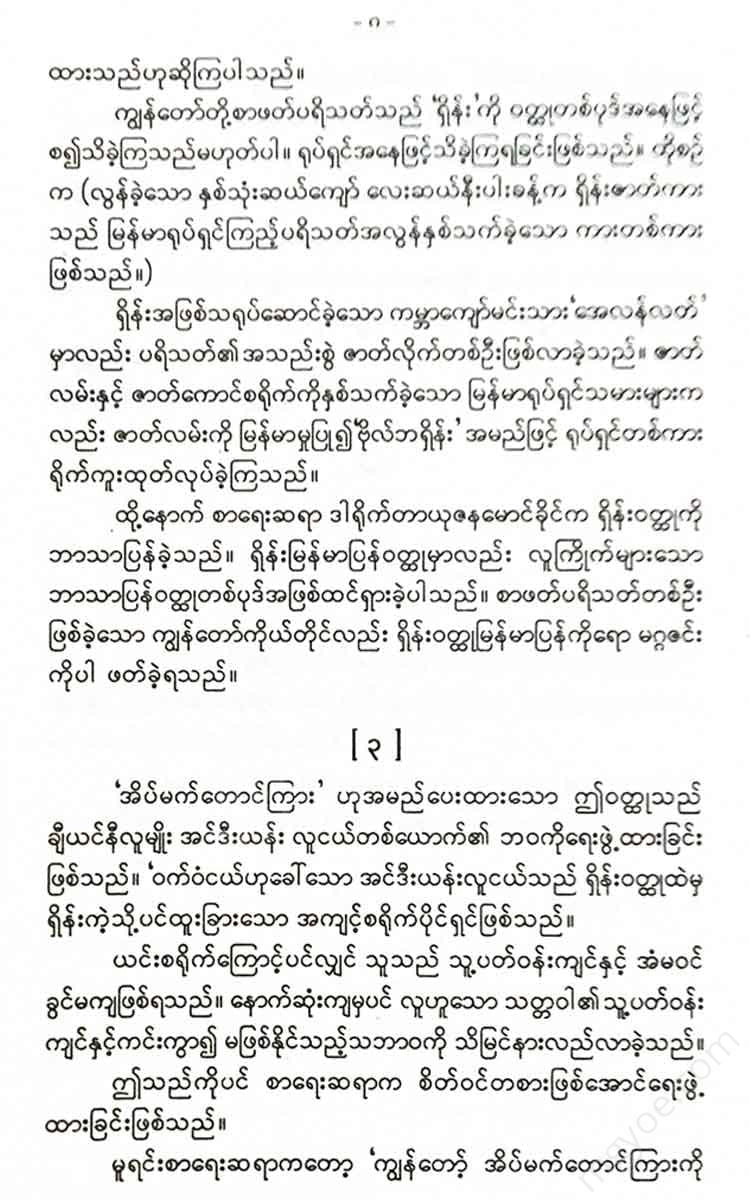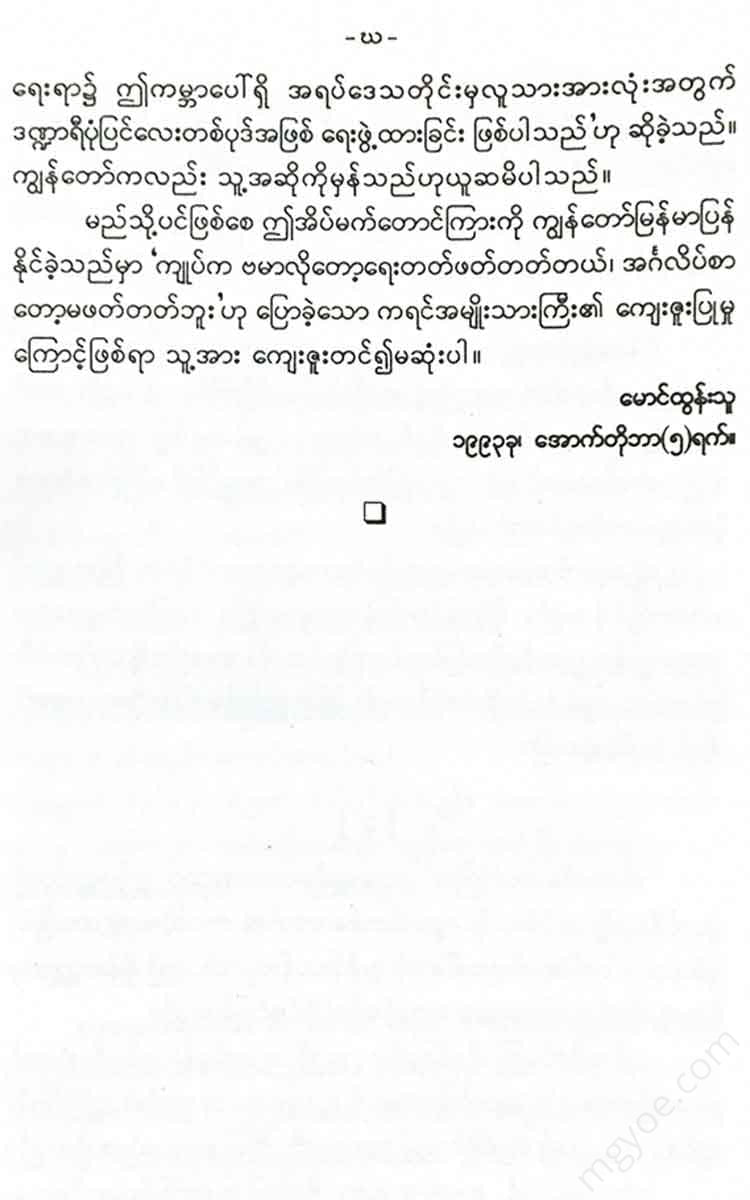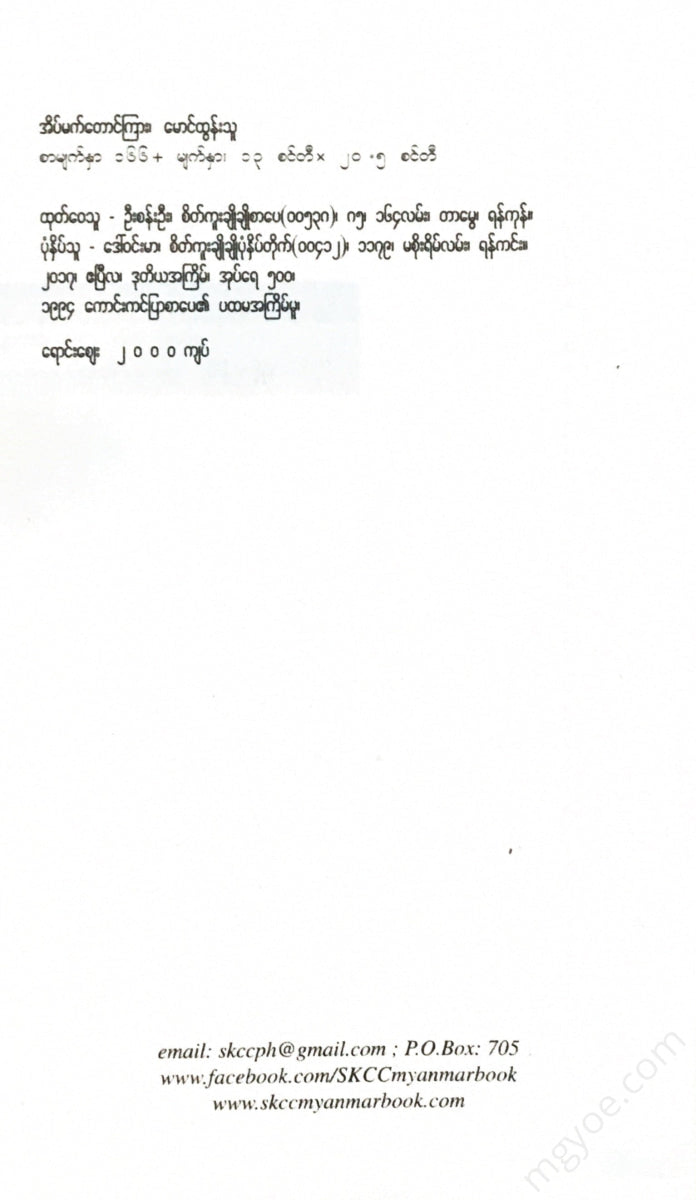စိတ်ကူးချိုချိုစာပေ
Maung Tun Thu - Dream Valley
Maung Tun Thu - Dream Valley
Couldn't load pickup availability
If you look at a map, you will see a remote region with high plains and high mountains.
This region is the vast northern border region of the western United States.
If you follow the upper edge of North Dakota and Montana to the top of the high, flat plains of Idaho, then continue south and continue along the Rocky Mountains to the east, you will enter Wyoming.
After crossing the Tallaght Hills in the east, it enters South Dakota.
Then, we landed again on the northern Canadian border.
This region is a high-altitude wilderness area, encompassing not only the entire state of Montana and the tip of Idaho, but also the entire upper part of Wyoming.
This region extends across both Dakota states and extends eastward across the wide Missouri River.
In fact, names such as North Dakota, South Dakota, Montana, Idaho, and Wyoming are the names given to the states on maps of the United States today.
At one time, large areas of this region were owned by the Sea Sauce Indians.
The Seasaus are still based east of the Missouri River today. At that time, the area was also inhabited by the Cree Indians.
The Powhatan, Minkee, and Arapahoe Indian tribes also lived there.
At that time, the Cheyenne Indians also lived in this area. The Cheyenne abandoned their original homeland and migrated westward along the west bank of the Missouri River.
Their group arrived and settled in this area, following the large herds of buffalo that had migrated to the highland grasslands within the border region.
If you follow the southern boundary of this area on a modern map, you will see the Blattil Hills surrounding this area.
If you look at the map, you will see that these hills are located between the southern confluence of the Cheyenne River and the northern confluence of the river called the Belfoche.
The small streams that flow into these two major rivers originate from these hills.
Actually, the highlands here are not mountains. They are large mountain ranges made up of very hard, rocky outcrops.
If you follow one of these small streams, you will eventually reach a plateau covered with rivers.
The plateau was over a mile long, and as you passed through tall grasses, you saw a very deep valley that dropped nearly eighty feet below.
On the other side of the valley, I saw another plateau that was level with the plateau here.
In fact, the valley between these two plateaus is the valley where the little bear has disappeared.
This valley was formed by the breaking and crushing of rocks, layers, and layers of rock within the large rock outcrops over many centuries. The valley is long and narrow, and has a triangular shape.
The upper elevation is narrow. A stream flowing from the plateau drops straight down through the lip of a large rock into a small lake in the valley.
The valley widens as you descend. At this point, the stream disappears from view as it flows into the crevices of the rocks. The rock walls on both sides are straight and vertical.
They are smoothed by weather erosion. A few grasses are struggling to take root between some of the rocky outcrops.
In one place, the rock faces are arranged in tiers, fifteen to twenty feet apart. In these places, small tunnels have formed in the walls. These tunnels are similar in shape. They are also quite large. There is no doubt that these tunnels are the work of human imagination.
In ancient times, there were no tunnels between the stone walls. This valley was hidden between two highlands, unknown to anyone. The valley was first discovered by buffaloes. The buffaloes came to the edge of this valley by smell.
An animal that had been walking carelessly in the darkness for countless years would have fallen off the edge of this valley and died. Or it might not have died instantly, but would have died slowly, suffering the pain of broken bones.
Once upon a time, too long ago to be estimated, on a moonless night, lightning flashed and thunder struck.
At that moment, a herd of buffaloes, which were crossing the plateau in the darkness, suddenly became frightened and fled in a pack. At this point, the buffaloes in front fell headlong into the valley. The buffaloes that followed, realizing the danger ahead, stopped and tried to turn back.
They collided with the buffaloes that were running ahead of them, running hard. Then, not only in the valley but also on the plateau, blood flowed. The buffaloes, cut into pieces, died one by one, hundreds and thousands.
In the early morning light, seven buffaloes were seen surviving in the valley. Four of them were dragging their legs because their legs were broken. Gradually, one by one, they died, and their number decreased to three. Only two female buffaloes and four male buffaloes remained.
The valley is rich in fine grass. There is also a stream. There are also large trees that provide shade during the summer when the sun is at its hottest. On one side, there are high, vertical rock walls that protect the valley from windstorms and snowstorms.
On that plateau, the buffalo population is constantly decreasing, not increasing, due to the fierce fighting that occurs between male buffaloes during the mating season, and the harsh winters that attack them.
In a place like the valley, the number of buffalo herds that graze does not exceed fifteen. Sometimes, on rare occasions, a herd of buffaloes does not even number eight. At that time, there were no man-made tunnels in the rock walls. There were only deep valleys and buffaloes, grass and streams. The exact year cannot be known. If you ask, you will not get an answer. It must have been one of the years when white men came to this land.
At that time, white men were confined to the eastern regions of the land. Few had yet crossed the great barrier of the Appalachian Mountains. There were few sea voyages and few fur traders had come from the west to the great lakes and the upper Mississippi River.
The existence of a very small number of former white settlers was unknown to the Indian tribes of the West. Even if they were, it was still a myth.
At that time, the valley where the little bear was lost had not yet been named. They had not even found it, let alone named it.
At that time, this valley was located in the center of a large landmass that could be called a continent, with high plains and high mountain ranges standing tall, constantly within the hand-held hills.
It is quiet and peaceful, accepting the changes of the changing climate.
These are ' demonstrations of place and power.'
The sons of the Cheyenne village are arranged in a circle. According to the Cheyenne custom, ten families live in one group. There are ten groups in total. There is a large field between the two groups, and that field is the main road into the village.
In one of the semi-circular huts on the western side of the village main road, women are preparing food. A stove has also been lit.
Then everyone left the tent. They left for no other reason than because there was a smoking ceremony to be held in the tent today.
The men entered the tent one by one. When they entered the tent, they walked to the right and stood for a moment. The owner of the tent, who was sitting on a stool near the back wall of the tent, greeted the newcomers with a kiss.
He points out where to sit. Then the person entering goes to the place indicated by the owner of the tent and sits down. When the people entering take their places, they are especially careful not to pass between the owner of the tent and the stove.
Everyone ate and drank from the food that had been set out. The host waited patiently until everyone had finished eating and had washed their hands. When everyone had finished eating, the host took a special incense stick prepared for the ceremony and filled it with incense. Then he began to speak.
“Soldiers... our enemies have set up a village in a place about six days’ journey from our village. This year ... the winter is very harsh and severe. This month is ... the month of the new moon of the buffalo, a time when our enemies are busy, and they will not expect our people to come. So ... I want to lead a battle to fight them and take their horses. May I ask... if you will come with me? ”
The leader of the army had led many armies in the past. He was a warrior who always won, so he believed that most people would follow him. No one doubted this.
He points to the sky with a stick. He points to the earth. He points to the four cardinal directions: east, north, west, and south.
He prayed to the spirits. In these four directions, do not success, good fortune, and courage reside? Then he lit a cigarette and smoked. Then he handed it to the person sitting on his left.
The man on his left took the cigarette and held it upright with the cigarette holder down. He remained silent for a long time in this manner. The place he sat in was the most honorable place according to the customs of his people.
